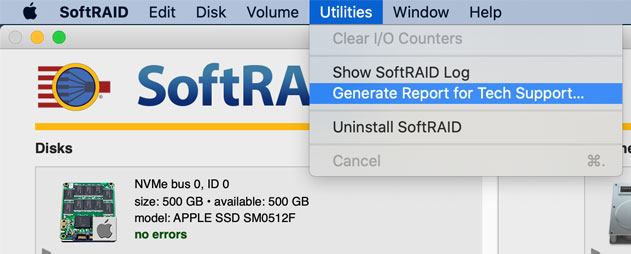

/SoftRAIDLite-57c439945f9b5855e58b06e9.jpg)
Install to get back to the installer, use sd2 or whatever was just created as the root disk, proceed as normal. Write/quit.īioctl -cC -l /dev/sd0a softraid0 to create a new softraid encrypted disk from the just-added RAID partition, and enter a passphrase. disklabel -E sd0, create a new slice taking the defaults for the new OpenBSD partition, and use RAID as the type. When OpenBSD boots, choose (S)hell, run fdisk -e sd0 and there should be a new HFS+ partition already sliced out from Disk Utility. Reboot your Mac and hold down the Alt key immediately after the startup chime. Otherwise you won't have a network device available with which to download firmware for your network device.

Pro tip: if you're using a USB wireless device that requires firmware (like urtwn), download it manually from and put it on removable media (or possibly even your existing EFI MSDOS partition). This can take a half hour or more.ĭownload the latest OpenBSD amd64 installXX.fs and dd it to a USB disk. Pro tip: open a terminal before doing the resize, and tail -f /var/log/system.log to see the output of hfs_truncatefs doing its thing. Disk Utility will do a live resize and hopefully create your new partition. Click "+" and add an HFS+ partition (choosing MSDOS for the type will create a Hybrid MBR which will cause problems later) of your chosen size that will be used for OpenBSD.
#Softraid pro mac os x
Open Disk Utility, click on your hard disk (the drive, not the Mac OS X partition) and click Partition. This will convert it into a Core Storage volume. macOS ConfigurationĮncrypt your drive by enabling FileVault.
#Softraid pro how to
Here's how to get both OSes working, each with its own disk encryption. GPT and UEFI support allow OpenBSD to co-exist with Mac OS X without the need for Boot Camp Assistant or Hybrid MBRs (though rEFInd is suggested for a graphical boot menu to choose between the OSes). The Broadcom multi-touch trackpad is supported as of 5.5 with the ubcmtp driver, allowing for two-finger scrolling and 2- and 3-button emulation by clicking with multiple fingers.ĥ.8-current brought new or improved support for GPT, UEFI, USB 3, and Thunderbolt (at least Apple's gigabit ethernet adapter, supported by bge).

The Broadcom wireless card in the Pro works with the bwfm driver and can be installed into the Air, or one can use this tiny USB adapter ( urtwn) which is rather unobtrusive when plugged in. ACPI works as expected for battery/AC status, CPU throttling, and full suspend/resume support. The new KMS code in 5.4 brings up the MBA's eDP display in 1366x768 with backlight control. OpenBSD works pretty well on at least the Mid-2011 Macbook Air (A1370, SandyBridge) and Mid-2013 Macbook Air (Haswell). macOS FileVault encryption and OpenBSD encrypted softraid on a Macbook Air/Pro However, now that newer versions of OpenBSD support GPT and UEFI, Boot Camp Assistant is no longer needed at all to boot OpenBSD. Newer Macbooks stopped supporting older versions of Windows through BCA and now only support Windows 10 since it uses GPT and UEFI.
#Softraid pro update
Update (): This document used to be very lengthy as there were many manual steps required to get OpenBSD and Mac OS X working together through Boot Camp Assistant (BCA), which created a hybrid MBR and enabled a legacy BIOS emulation mode which older versions of Windows (and OpenBSD) required. Update (): The Broadcom wireless card in the MacBook Pro works and can be crammed into the Air.


 0 kommentar(er)
0 kommentar(er)
